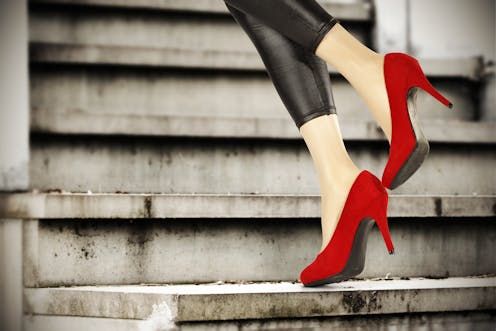The paradox of choice. Why made-to-order might not solve the fashion industry's problems
- Written by Jessica Pallant, Lecturer in Marketing, Swinburne University of Technology

How could you go from winning awards for “Store Design of The Year” and “Best Shoe Ever” to selling nothing?
In 2009 the Australian startup Shoes of Prey set out to make exactly the shoes its customers wanted. Customers could pick the designs, sizes and exact specifications, and Shoes of Prey would deliver exactly what they ordered.
They wouldn’t make shoes no one needed. Traditional retailers use flash sales to move stock that has gone out of fashion. Or they burn or bury it. British fashion label Burberry says it has destroyed more than A$150 million worth of unsold clothes, accessories and perfume over the past five years.
Last month Shoes of Prey hit pause.
Co-founder Jodie Fox went to social media to say it was considering its future and wouldn’t process any further orders.
It had been unable to “truly crack mass market adoption”.
If Shoes of Prey couldn’t, maybe no one can.
The pros and cons of mass customisation
Customisation can increase the perceived value of a product through the “I designed it myself” effect, giving customers a sense of ownership as “creators”.
It can also improve the customer’s perception of the quality of the product. Research shows people are more likely to enjoy the taste of a meal made from a kit they used themselves than the taste of a meal made from the same kit in a store.
But there are downsides. Making choices is taxing.
Read more: Digital by design: how technology is breathing new life into the fashion business
And the choices pile up. For shoes, size is probably the easiest, followed by colour, heel size, width, pattern and accessories. There are other judgements to be made. Should there be more than one colour? Will that choice look good? What will others think? And so on.
Having many roughly equal options to choose from is draining. The satisfaction we get from choice follows an inverted U curve. Having more options when there are just a few makes us feel good, but having even more when there are already a lot makes us feel worse.
And then there’s the cost of time.
When customising, customers have to learn what is possible within the confines of the toolkit, test out different possible solutions, learn from their errors and pick the best solution. All of this takes time.
It’s a resource not everyone has. Research shows customers with the most free time are the most likely to appreciate the opportunity to make choices about what they buy.
Shoes of Prey’s mistake might have been to increase the range and complexity of its offerings. What started as customising high heels in 2009 became selecting styles of heels, flats, sneakers, boots and sandals with a multitude of options within each.
While loyal customers could keep up, for the average customer the choice was overwhelming. For some, it was easier to take the path of least resistance – a pair of off-the-shelf shoes.
Mass customisation today
Some retailers are persisting with mass customisation. More than 60% of online shoppers in the US are believed to have chosen, recommended or bought a brand that provides a customised experience or service.
Interestingly though, 42% wanted to customise from a list of options and be “led by the brands” rather than start from scratch.
So-called “customisation via starting solution”, where customers choose from an inital option closest to their desired outcome and then refine it to their needs, has been found to enhance satisfaction, decrease the perceived complexity of the customisation and result in more feature-rich products being customised.
Read more: What's really driving the future of retail?
An example of a brand currently making headway is Choosy, a new fast fashion brand that draws its fashion inspiration almost exclusively from the top trending posts on Instagram. Releasing ten styles a week, it gives customers just a few days to order each before they go into production. By creating only pieces customers have committed to buying, it avoids building up surplus stock and leverages the upside of mass customisation while minimising the downside.
Does it have a future?
The waste in mass production of fashion items is unsustainable in the long term, from both an economic and social standpoint.
Shoes of Prey broke ground with its innovative business model of delivering customised shoes through on-demand manufacturing, but faced challenges in convincing customers to make the necessary choices to customise a product.
If brands can tackle the barriers to customisation, reducing the cost to customers in time and choice as Choosy has done, then mass customisation could have a future.
Authors: Jessica Pallant, Lecturer in Marketing, Swinburne University of Technology



